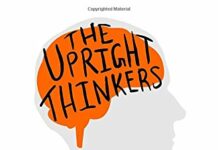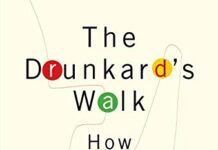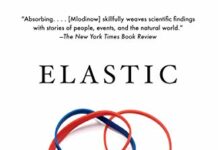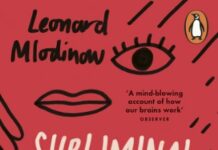
Ebook Info
- Published: 2018
- Number of pages: 251 pages
- Format: PDF
- File Size: 17.13 MB
- Authors: Leonard Mlodinow
Description
The best-selling author of Subliminal and The Drunkard’s Walk teaches you how to tap into the hidden power of your brain. “Elastic is a book that will help you survive the whirlwind.”—Daniel H. Pink, author of When and A Whole New MindNamed to the 800-CEO-READ Business Book Awards Longlist In this startling and provocative look at how the human mind deals with change, Leonard Mlodinow shows us to unleash the natural abilities we all possess so we can thrive in dynamic and troubled times. Truly original minds capitalize when everyone else struggles. And most of us assume that these abilities are innate, reserved for a select few. But Mlodinow reveals that we all possess them, that we all have encoded in our brains a skill he terms elastic thinking—and he guides us in how to harness it. Drawing on groundbreaking research, Mlodinow outlines how we can learn to let go of comfortable ideas and become accustomed to ambiguity and contradiction; how we can rise above conventional mindsets and reframe the questions we ask; and how we can improve our ability to solve problems and generate new ideas—critical skills for achieving professional and personal success in our quickly morphing world.
User’s Reviews
Reviews from Amazon users which were colected at the time this book was published on the website:
⭐The topics discussed in this book are ultimately well-covered elsewhere, so if you’re relatively knowledgeable in the areas of evolutionary psychology, cognitive psychology, the unconscious mind, and creative thinking, you’ll find little novelty here.On the other hand, if you’re less knowledgeable in these areas, this is a great book to learn about them all. Mlodinow expertly synthesizes the research in these areas and covers the techniques you can use to enhance your creative thinking skills. It also acts as a great refresher and an interesting tour through the mind, particularly its capacity for analytical and creative thought.Part 1 of the book addresses the concept of “neophilia,” or our inborn proclivity for novelty and change, which has deep evolutionary roots. Parts 2 and 3 largely address the differences between scripted or automatic behavior, analytical/logical thinking, and creative thinking, while part 4 discusses the techniques you can use to unlock your own creative potential.Here are some of the key insights I took away from the book:- Analytical or logical thinking is algorithm-based and largely devoid of emotion, whereas elastic (creative) thinking is driven by emotion and motivation. This is the reason why the threats of artificial intelligence are exaggerated; we can get computers to “think” analytically, based on algorithms, but we cannot get a computer to want to think or to enjoy thinking as motivation for setting its own goals and pursuing creative thought.- Elastic thinking is associated with high levels of neophilia (love of novelty) and higher levels of schizotypy (tendency toward original thinking, sensing unusual connections or feelings, and nonconformist behavior), both of which can be cultivated.- The main methods of cultivating elastic thinking include:1. Mindfulness meditation to reduce the tendency to engage in automatic scripted behavior.2. Intentionally shifting viewpoints to approach problems from different angles.3. Challenging your most fundamental assumptions.4. Allowing your unconscious mind to work on a problem by relaxing your analytical mind, through activities such as meditation, going for long walks, taking extended breaks, and sleeping on a problem.5. Postponing your creative thinking to periods when you are less mentally alert and more fatigued (which inhibits the filtering capacity of your prefrontal cortex).It’s in this area—actual creative thinking techniques—that the book seems to be lacking. While the book does a great job of summarizing research and explaining the underlying neuroscience, if you’re looking for specific techniques I would suggest any of the works by Michael Michalko. In particular, his book Thinkertoys includes dozens of techniques that can be used to generate new ideas and get you in the creative mindset.In the end, Mlodinow addresses the topic of creativity in a very analytical way, offering no new ways of approaching the topic other than renaming creative thinking “elastic thinking.” That being said, I did enjoy the book and its anecdotes and Mlodinow is always a skillful and entertaining writer. And if you don’t already know that much about the topic, this book will provide a quick primer.
⭐What makes your brain better than a computer? Computers can hold an unfathomable amount of data, but a computer is unable to interpret that data unassisted. Our brains are unique because they are able to adapt instantly.The book Elastic presents many examples; here is my favorite. Our brains can determine the correct definition of a word given the context of a simple sentence. Consider these two sentences: “The cooking teacher said the young children made bad snacks” and “The cannibal said the young children made bad snacks.” The difference between these two sentences is the definition of “made.” A computer could not, on its own, determine the difference. We, as humans trained in the English language, understand that there could be a difference.Our brain’s ability to adapt, create meaning, and regulate objective and subject thinking are just some of the ways it is extraordinary.Is there a single thing that makes our brains better than computers? No. Is there a single thing that makes our brains different than an animal brain? No. Our brains are profoundly complex. There is a lot we know and more that we don’t know.This was an extremely interesting and insightful book.
⭐Let me start by saying I really dislike self-help books. Most of the time they feel like predatory cash grabs that either enable bad habits or make impossible promises to trick people into handing over their money. One might expect that Elastic falls into this category, but Leonard Mlodinow does a brilliant job of interweaving research-based fact with anecdotal evidence. His is not a self-help book, but one that helps us to learn about our complex inner workings. The goal is to enlighten us in such a way that makes our ideas richer, even if they’re not always conventional. Overall, he does a nice job in getting us there.
⭐The book provides comprehensive information about the way the human brain works. The narrative is based in the separation of the human thinking in three groups: automatic responses, analytical conscious thinking, and unconscious elastic thinking. The author arguments that elastic thinking is very important for today’s world, where rapid and fast changes are the norm. The book is written in a clear and easy-to-read fashion. It is full of references to scientific research that supports the authors arguments. A very good reading for anyone interested in understand more about the beauty of human brain. It worths reading it.
⭐I love this book. I think anyone with an interest in psychology would. Great pros and cons of various mental conditions and historical examples of people with them
⭐I truly had more takeaways than I can remember; but I just wanted to tip my cap to the author. I truly mean that. This book allowed me to get back into the drivers seat and I really appreciate it. I can’t stress enough how captivating and real this book is. If you want to really take away something from a book of depth and substance, then read this book.
⭐A lot of these reviews stress that there’s nothing new here, but I didn’t find that to be the case. His questionnaires are fun and the book is interspersed with many new interesting facts (one of which, the creative nature of schizotypy, just appeared in a study on mental illness as being an extreme version of this common personality type). It was a very informative and fun book.
⭐Read this book right away after the Reader’s Digest article came out in Dec. 2018 but got tired of trying to find it at the used book store. I needed my own copy.
⭐Leonard, a great book that resonates with my personal experiences. Waking in the morning given an answer, a picture a word … As tailered to your requirement as simple as possible; like a free gift.Studying neuroscience and AI this book is a gem!The idea of the bottom up algorithm I found fascinating; solving hard problems naturally; resonates with David Bohm’s idea of wholeness and implicate order and a graph solution of my own invention where the implicate order is bottom up and one or more optimal solutions is the explicate order in the neuron shaped graph. Thank you for the inspiration. Best Niels Hoffmann
⭐Good enough book but it pales in comparison to Mlodinow’s ‘Subliminal’ – non-essential reading
⭐Went to a creative thinking talk and this book was recommended – whilst with my very narrow mind some points were a bit of a stretch for me, it certainly was a great read. Would recommend to anyone, especially those who work in a creative industry.
⭐Great
⭐Looking at thinking styles. Inspired by human thinking giving insights into AI design and mural nets.
Keywords
Free Download Elastic: Unlocking Your Brain’s Ability to Embrace Change in PDF format
Elastic: Unlocking Your Brain’s Ability to Embrace Change PDF Free Download
Download Elastic: Unlocking Your Brain’s Ability to Embrace Change 2018 PDF Free
Elastic: Unlocking Your Brain’s Ability to Embrace Change 2018 PDF Free Download
Download Elastic: Unlocking Your Brain’s Ability to Embrace Change PDF
Free Download Ebook Elastic: Unlocking Your Brain’s Ability to Embrace Change



